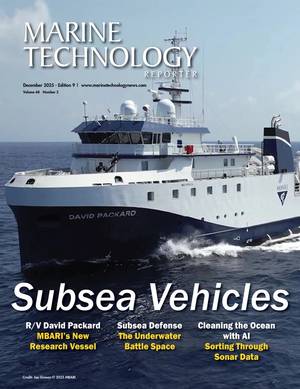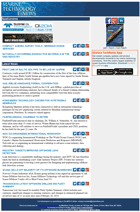Novel Hydrothermal System Links Two Seabed Phenomena
An international research team led by the GEOMAR Helmholtz Centre for Ocean Research Kiel has discovered a globally unique system on the seabed off the coast of Papua New Guinea.
During their expedition aboard the research vessel Sonne, they came across the “Karambusel” field, where two processes occur simultaneously: the release of hot hydrothermal fluids and unusually high amounts of methane and other hydrocarbons.
This combination makes the system unique worldwide.
It lies at a depth of around 1,300 meters on a flank of Conical Seamount in the western Pacific, off the island of Lihir in Papua New Guinea.
Hydrothermal vents and methane seeps usually occur in different places on the seabed. In this case, however, they are in close proximity due to the unique geology of Conical Seamount, where thick sediment layers containing organic material lie beneath the volcanic structure. Ascending magma heats these layers, generating methane and other hydrocarbons. At the same time, this magmatic heat also drives mineral-rich fluids upwards, where they emerge as hot vents at the seabed.
Both fluids – the hot water from depth and the cooler, methane-rich gases from the sediments – travel along the same pathways to the surface. Consequently, hot fluid and cold gas bubble up from the seabed just a few centimeters apart.

This direct neighborhood creates an entirely new hybrid environment, providing a habitat for an extremely diverse range of animals. Dense fields of the mussel Bathymodiolus, tube worms, shrimp, amphipods, and purple sea cucumbers cover the rocks.
Dr Philipp Brandl, marine geologist at the GEOMAR Helmholtz Centre for Ocean Research Kiel, said: “No one really expected to find a hydrothermal field here, let alone one that is so exceptional.” Although previous expeditions had indicated minor hydrothermal activity, the field remained undetected during several research cruises. It was only through the use of the ROV Kiel 6000 that the peculiarities of this underwater landscape were revealed. “It was a real surprise,” says Brandl, “especially for those of us who had worked in this area multiple times.”

Due to the abundance of mussels, the scientists, along with local observer Stanis Konabe from the University of Papua New Guinea, named the field ‘Karambusel’. In the local Tok Pisin language, this means ‘mussel’.
The unusual gas composition at the Karambusel field influences both the communities of life and the geological features. The methane emitted is highly concentrated, exceeding 80%, while hot fluids rise from the magma simultaneously, creating unique chemical conditions in the subsurface. Metals such as gold and silver, together with elements such as arsenic, antimony, and mercury, are deposited in the rock. Thus, the area bears the marks of an earlier, high-temperature phase involving precious metals, alongside present-day, cooler activity.
Despite its unique geology and biology, this site is under threat. Mining is already taking place in the region, for example, at the Ladolam gold mine on Lihir, where waste and residues are discharged into the sea. Exploration licenses for minerals and hydrocarbons on the seabed also exist. This endangers the fragile habitat and its highly specialized fauna.
The researchers are therefore calling for urgent further study, targeted marine spatial planning, and effective protection measures to preserve this extraordinary ecosystem. Brandl: “We have discovered an unexpected treasure trove of biodiversity in the Karambusel field that needs to be protected before economic interests destroy it.”














 December 2025
December 2025



